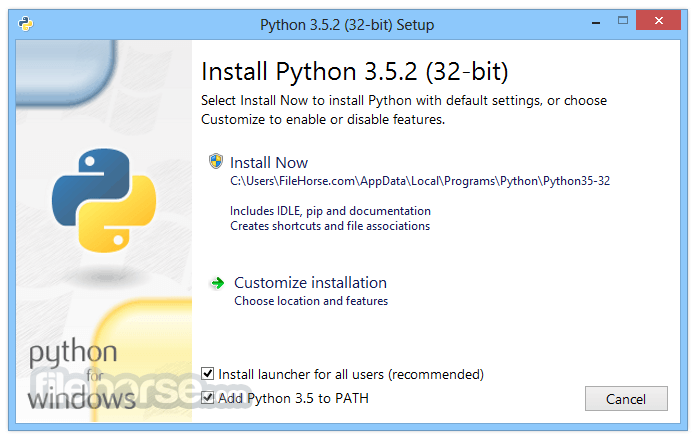
vhgc.over-blog.com/
18 Janvier 2021
Memory management in Python involves a private heap containing all Pythonobjects and data structures. The management of this private heap is ensuredinternally by the Python memory manager. The Python memory manager hasdifferent components which deal with various dynamic storage management aspects,like sharing, segmentation, preallocation or caching.
Python 3.2.5 was released on May 15th, 2013. This release fixes a few regressions found in Python 3.2.4, and is planned to be the final 3.2 series bugfix release. New features of the 3.2 series, compared to 3.1 Python 3.2 is a continuation of the efforts to improve and stabilize the Python 3.x line. Creating Virtual Environments¶. The script used to create and manage virtual environments is called pyvenv.pyvenv will usually install the most recent version of Python that you have available; the script is also installed with a version number, so if you have multiple versions of Python on your system you can select a specific Python version by running pyvenv-3.4 or whichever version. Python runs on Windows, Linux/Unix, Mac OS X, OS/2, Amiga, Palm Handhelds, and Nokia mobile phones. Python has also been ported to the Java and.NET virtual machines. Python is distributed under an OSI-approved open source license that makes it free to use, even for commercial products. Python 3.5.2 was released on June 26th, 2016. Major new features of the 3.5 series, compared to 3.4 Among the new major new features and changes in the 3.5 release series are.
At the lowest level, a raw memory allocator ensures that there is enough room inthe private heap for storing all Python-related data by interacting with thememory manager of the operating system. On top of the raw memory allocator,several object-specific allocators operate on the same heap and implementdistinct memory management policies adapted to the peculiarities of every objecttype. For example, integer objects are managed differently within the heap thanstrings, tuples or dictionaries because integers imply different storagerequirements and speed/space tradeoffs. The Python memory manager thus delegatessome of the work to the object-specific allocators, but ensures that the latteroperate within the bounds of the private heap.

It is important to understand that the management of the Python heap isperformed by the interpreter itself and that the user has no control over it,even if she regularly manipulates object pointers to memory blocks inside thatheap. The allocation of heap space for Python objects and other internalbuffers is performed on demand by the Python memory manager through the Python/CAPI functions listed in this document.
To avoid memory corruption, extension writers should never try to operate onPython objects with the functions exported by the C library: malloc(),calloc(), realloc() and free(). This will result in mixedcalls between the C allocator and the Python memory manager with fatalconsequences, because they implement different algorithms and operate ondifferent heaps. However, one may safely allocate and release memory blockswith the C library allocator for individual purposes, as shown in the followingexample:

In this example, the memory request for the I/O buffer is handled by the Clibrary allocator. The Python memory manager is involved only in the allocationof the string object returned as a result.
In most situations, however, it is recommended to allocate memory from thePython heap specifically because the latter is under control of the Pythonmemory manager. For example, this is required when the interpreter is extendedwith new object types written in C. Another reason for using the Python heap isthe desire to inform the Python memory manager about the memory needs of theextension module. Even when the requested memory is used exclusively forinternal, highly-specific purposes, delegating all memory requests to the Pythonmemory manager causes the interpreter to have a more accurate image of itsmemory footprint as a whole. Consequently, under certain circumstances, thePython memory manager may or may not trigger appropriate actions, like garbagecollection, memory compaction or other preventive procedures. Note that by usingthe C library allocator as shown in the previous example, the allocated memoryfor the I/O buffer escapes completely the Python memory manager.
See also
The PYTHONMALLOCSTATS environment variable can be used to printmemory allocation statistics every time a new object arena is created, andon shutdown.
